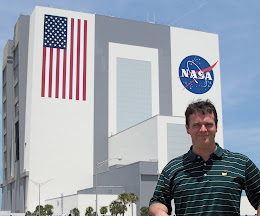 |
| Falcon 9 lifts-off with Crew Dragon 1 from KSC on Nov. 15. (NASA) |
CAPE CANAVERAL, Fla. -- A SpaceX Falcon 9 lifted-off from America's Space Coast on Sunday evening with four astronauts beginning the first flight of an operational Crew Dragon spacecraft.
NASA astronauts Michael Hopkins, Victor Glover, Shannon Walker, and Japan's Soichi Noguchi are on course to dock with the International Space Station on Monday. They are scheduled to live and work aboard the orbital outpost for six months.
Crew Dragon 1 thundered away from the Kennedy Space Center's historic pad 39-A at 7:27:17 p.m. EST, riding a top the Falcon 9. The candlestick rocket darted out over the Atlantic waters at the exact moment the space station was 260 miles overhead.
"To all the people at NASA and SpaceX, by working through these difficult times you've inspired the nation, the world, and in no small part the name of this incredible vehicle," Dragon commander Hopkins radioed minutes before launch. "And now it's time to do our part -- Crew One for all."
NASA astronauts Michael Hopkins, Victor Glover, Shannon Walker, and Japan's Soichi Noguchi are on course to dock with the International Space Station on Monday. They are scheduled to live and work aboard the orbital outpost for six months.
Crew Dragon 1 thundered away from the Kennedy Space Center's historic pad 39-A at 7:27:17 p.m. EST, riding a top the Falcon 9. The candlestick rocket darted out over the Atlantic waters at the exact moment the space station was 260 miles overhead.
"To all the people at NASA and SpaceX, by working through these difficult times you've inspired the nation, the world, and in no small part the name of this incredible vehicle," Dragon commander Hopkins radioed minutes before launch. "And now it's time to do our part -- Crew One for all."
The astronauts named their spacecraft Resilience by the crew to highlight the dedication of the teams involved with preparing the mission for flight. The successful launch occurred on the heels of a test flight by two NASA astronauts last May.












